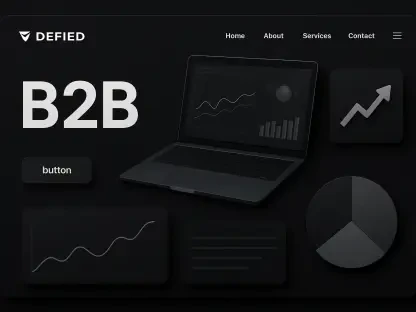In an era where digital transformation dictates competitive advantage, marketing automation emerges as a pivotal force reshaping business landscapes across the globe. As of 2025, the global market for this technology stands at a robust USD 37.8 billion, with projections indicating a surge to USD 96 billion by 2035, driven by a compound annual growth rate (CAGR) of 9.8%. This staggering growth underscores a critical shift: businesses must adapt to automated solutions to meet evolving consumer demands and regulatory complexities. This analysis dives into the current state of marketing automation, unpacks key trends, and forecasts its trajectory over the next decade, offering strategic insights for navigating this dynamic sector.
Decoding the Current Market Landscape
The marketing automation market in 2025 is characterized by rapid technological integration and a pressing need for personalized customer engagement. Businesses across industries, from retail to healthcare, are leveraging automation to streamline operations and enhance customer interactions. The adoption of cloud-based platforms is particularly prominent, especially among small and medium-sized enterprises (SMBs), due to their scalability and cost-effectiveness. This trend reflects a broader industry push toward efficiency, with automation tools handling repetitive tasks like email campaigns and lead nurturing, allowing teams to focus on strategic priorities.
Beyond operational benefits, the market is shaped by a growing emphasis on data-driven decision-making. Tools equipped with real-time analytics enable companies to segment audiences with precision, delivering tailored content that boosts return on investment (ROI). However, challenges such as fragmented marketing technology stacks and integration hurdles persist, often hindering seamless implementation. These barriers highlight the need for unified solutions that can bridge gaps between customer relationship management (CRM), sales, and analytics systems.
A notable driver of current market dynamics is the regulatory environment. With stringent laws like the General Data Protection Regulation (GDPR) in Europe and the California Consumer Privacy Act (CCPA) in the U.S., over 68% of U.S. enterprises have adopted automated platforms to ensure compliance while maintaining effective outreach. This dual focus on regulation and engagement sets the stage for understanding how the market will evolve, as companies balance innovation with accountability in an increasingly complex digital ecosystem.
Key Trends Fueling Market Growth
AI-Driven Personalization as a Game-Changer
Artificial intelligence (AI) stands at the forefront of marketing automation’s evolution, redefining how businesses connect with consumers. AI-powered tools enable hyper-personalization by analyzing user behavior in real time, ensuring content aligns with individual preferences. This capability not only enhances customer satisfaction but also drives loyalty, positioning AI as a cornerstone of modern marketing strategies. The impact is evident across sectors, with retail brands using predictive analytics to anticipate purchase patterns and financial firms tailoring offers based on client data.
Despite these advantages, the high cost of AI implementation poses a challenge for SMBs, often limiting access to cutting-edge tools. Additionally, there is a risk of over-reliance on algorithms, which may fail to capture nuanced human emotions or context. Balancing automation with human oversight remains essential to maintain authenticity in customer interactions, ensuring that technology serves as an enabler rather than a replacement for personal touch.
Privacy Regulations Steering Innovation
Data privacy continues to be a defining factor in the marketing automation space, with compliance shaping platform development and adoption. As global regulations tighten, businesses are compelled to invest in privacy-centric tools that prioritize consumer consent and data security. This shift is driving innovation, with platforms now incorporating features to manage permissions and anonymize data, ensuring adherence to legal standards without compromising campaign effectiveness.
The regulatory landscape varies significantly by region, creating both challenges and opportunities. For instance, North American companies face strict mandates but benefit from advanced technological infrastructure, while European markets emphasize GDPR-driven consent models. Navigating this maze requires tailored approaches, as failure to comply can result in substantial fines and reputational damage. Yet, those who adapt proactively often gain consumer trust, turning compliance into a competitive edge.
Omnichannel Strategies Bridging Touchpoints
The rise of omnichannel outreach marks another critical trend, as businesses strive to create seamless customer experiences across multiple platforms. Whether through email, social media, or mobile apps, automation tools are enabling consistent messaging that adapts to diverse touchpoints. This approach is particularly vital in industries like retail, where complex customer journeys demand cohesive interactions from browsing to purchase.
Achieving true omnichannel integration, however, is not without obstacles. Disparate systems and inconsistent data flows can disrupt the customer experience, underscoring the need for unified marketing hubs. As technology advances, the focus is shifting toward solutions that synchronize channels in real time, ensuring that every interaction feels connected and relevant to the end user.
Regional Dynamics and Market Variations
The global marketing automation market exhibits distinct regional patterns, reflecting differences in technology adoption, consumer behavior, and regulatory priorities. North America leads as the dominant player, bolstered by its mature digital infrastructure and rapid embrace of AI solutions. This region benefits from a strong focus on compliance, with businesses leveraging automation to meet privacy standards while driving innovation in customer engagement.
In contrast, the Asia Pacific region is experiencing the fastest growth, fueled by mobile-first consumer bases and supportive government initiatives. Programs aimed at digital transformation, such as national grants for SMBs, are accelerating adoption, though inconsistent infrastructure poses challenges. Meanwhile, Europe demonstrates steady progress with a privacy-first mindset, as seen in partnerships between SaaS vendors and local firms to develop consent-focused tools. These variations emphasize the importance of localized strategies, as a one-size-fits-all approach fails to address unique market needs.
Understanding these regional disparities is crucial for forecasting growth through 2035. While North America may maintain its lead in innovation, Asia Pacific’s expanding digital economies present untapped potential. Companies that tailor their automation strategies to cultural and legal nuances will likely emerge as leaders, capitalizing on diverse opportunities across the global landscape.
Future Projections: The Road to 2035
Looking ahead, the marketing automation market is poised for transformative growth, with projections estimating a value of USD 96 billion by 2035. This expansion will be driven by advancements in AI and machine learning, enabling unprecedented levels of personalization and predictive analytics. Hyper-personalization, coupled with cookieless targeting strategies, will become standard as businesses pivot to first-party data amid the phasing out of third-party cookies, ensuring precision in reaching audiences.
Economic and regulatory shifts will also play a significant role in shaping the market’s trajectory. The rising cost of AI tools may widen the gap between large enterprises and SMBs unless affordable, scalable solutions emerge. Additionally, evolving privacy laws could complicate cross-border marketing efforts, necessitating agile platforms that adapt to changing mandates. Sectors like healthcare and finance, with their stringent data requirements, will likely drive demand for specialized automation tools over the next decade.
Ultimately, the forecast points to marketing automation becoming a universal standard across industries. Businesses that prioritize adaptability—leveraging AI responsibly while aligning with regional regulations—stand to gain a competitive advantage. The next ten years will test the industry’s capacity to innovate, as emerging technologies and consumer expectations redefine what it means to engage effectively in a digital-first world.
Reflecting on the Path Forward
Reflecting on this analysis, it becomes clear that the marketing automation market has embarked on a trajectory of remarkable growth and innovation by 2025. The insights into AI-driven personalization, privacy compliance, and regional dynamics have revealed a sector brimming with potential yet fraught with challenges. The projected rise to USD 96 billion by 2035 underscores the urgency for strategic adaptation, as automation reshapes customer engagement and operational efficiency.
Looking back, the key takeaway is the need for businesses to invest in scalable, compliant platforms that balance technology with human insight. Companies must prioritize training teams to navigate the complexities of AI tools while fostering trust through privacy-centric practices. Those who tailor strategies to regional nuances, from North America’s innovation hubs to Asia Pacific’s mobile-driven markets, position themselves for success.
Moving forward from that point, the focus needs to shift toward collaborative solutions—partnerships with leading technology providers could democratize access to advanced tools for SMBs. Additionally, anticipating regulatory changes through proactive compliance measures is essential to avoid pitfalls. As the market continues to evolve, embracing flexibility and foresight becomes the cornerstone for thriving in an automated future, ensuring businesses not only keep pace but set the standard for innovation.









